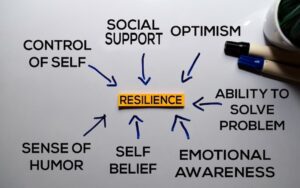
We have a tradition at The CEO’s Right Hand. Each year, we gather CFOs from various industries and pick their brains about the business trends they see and how they might impact our clients. We look at these trends through an economic lens and develop recommendations for your financial planning cycles. In other words, what is happening that could affect your budgets and forecasts, and what can you do about it?
Below, I share the insights from that discussion.
Table of Contents
- Attracting and Retaining an Engaged Workforce Requires Strategy
- Emerging (and Disappearing) Technologies
- Cultivating Resilience is No Longer a “Nice-to-Have”
- A Tentatively Optimistic Economy but Elusive Financing
- The 2024 Elections and Policy Changes
Business Trend 1: Attracting and Retaining an Engaged Workforce Requires Strategy
Despite news of tech layoffs, unemployment remains low, and many business owners struggle to find good people. But the employment rate is not the only issue. Hiring quality employees and keeping them happy has always been essential, but doing so effectively has become more complex.
We now have four generations of employees in the workforce, each with a unique set of salary, benefits, workspace, and personal needs. Remote work remains a thorny issue for many, and unions have become very active in some industries. These factors affect large and small businesses alike, so what can you do to keep your forecasts on track and your costs under control?
Get Creative with Incentives
Think carefully about who you are, who you want to be as an employer, and how that fits your vision. And consider the actual behaviors you want your employees to have. Then, create incentives around those behaviors. If you align your incentives with behaviors you want, you can align your employees with your company goals.
For example, if your business model is more effective when employees come to the office, how can you make that more compelling? Consider offering gym memberships, childcare, hybrid work, or other perks to compensate for any perceived downsides or competitive pressure.
And, while we are discussing incentives, how do you keep employees happy as your team evolves? Hiring and training are expensive. So, as wages go up for new hires, remember to take care of the people you have relied on for years.
Set Clear Expectations and Hold People Accountable
Micromanaging and insisting that people remain in your sight never works; it only breeds mistrust and resentment. Instead, be results-oriented. Employees want to know what they need to do to succeed, and you need to know what to expect so you can run your business. Set clear, time-bound expectations (KPIs) and hold people accountable.
Then, give your staff what they need to thrive. That means going beyond collaboration tools and equipment. You need a reliable structure to keep everyone up-to-speed and engaged. For example, many companies have a mix of in-person and remote workers, so they combine virtual one-on-ones and team meetings with real-time, in-person events to strengthen their culture.
Business Trend 2: Emerging (and Disappearing) Technologies
Technology is shifting quickly, each iteration promising benefits galore. This business trend is not new, but 2023 was particularly exciting with the introduction of Generative AI, a proliferation of technology “enhanced” retail and dining experiences, and imploding social media platforms (ahem, “Twitter”). Indeed, even the finance profession is seeing its share of promising new solutions, like the financial planning and analysis platform DataRails.
Although some see technology like machine learning and augmented reality as an existential threat, our clients’ biggest worry is the risk of falling behind the competition and missing out on opportunities. How can you seize the moment while remaining focused on your vision?
Stay Current, but Don’t Be Fooled by the Hype
Pay attention and be open, but being an early adopter isn’t always necessary. For instance, artificial intelligence (AI) is fun and promising, but it has a long way to go toward creating efficiencies. You can use it for simple tasks, but you need to do more than input commands and expect it to do work for you. It is simply another tool that still requires significant human interaction and oversight. In most cases, taking your time and letting technology evolve before jumping in is okay.
Exhaust Your Existing Technology Stack First
If you take full advantage of your current technology and have the capacity, skills, and funds to experiment, go for it. But, in our experience, many small and mid-sized businesses must catch up in this area. For example, if you invested in an accounting solution, like QuickBooks, but continue to do much of your work using spreadsheets, focus on this vital migration first. Embrace your existing solutions and get yourself in a stronger position before trying something new.
Roll Out New Technology Slowly, Always Being Mindful of the Impact
When ready to invest, carefully explore how new technologies fit your vision and the potential costs and benefits. Ideally, such investments should be a group decision. Ask your management team for input about the tools that could streamline what you already do or give you an edge.
But always keep your customers and employees in mind. Technologies only fit some businesses, and change can be difficult. If a new customer service solution reduces costs but leads to a lackluster customer experience and unhappy employees, loyalty and profit will decline, negating any benefit. So, weigh your options carefully, calculate the potential ROI, and run tests before jumping in. That will ensure you choose sensible solutions your entire team can get behind.
Business Trend 3: Cultivating Resilience is No Longer a “Nice-to-Have”

Rapidly changing political-economic and environmental factors are affecting businesses worldwide, disrupting supply chains, funding, and the state of our workforce. Whether it’s a war, pandemic, wildfires, a change in policy, or cultural clashes, these challenges have become the norm. And, due to globalization, events that occur in one part of the world can have a massive impact on another.
Cultivating resilience has always been smart, but in today’s environment, it is a necessity. So, what can you do?
Strengthen Your Infrastructure
Take stock of the inner workings of your company and address any weaknesses in the foundational structures you depend upon to function. For example, you likely have a financial infrastructure of people, processes, systems, and insights that support essential functions and keep the business financially viable. Do these components work together smoothly, or do you need to resolve some issues with insufficient reporting, dated technology, or a lack of proper controls?
Diversify, Diversify, Diversify
Relying on one or two companies to provide supplies, a few critical customers for revenue, or one marketing channel (like referrals) for leads leaves you highly exposed. If, for example, the war in Ukraine escalates into multi-country involvement and you count on one company in China for all your supplies, you may no longer be able to deliver your products and services, and your entire business could halt. We saw this happen already during the pandemic. We know it is not easy, but you must develop alternatives in case you need to shift.
Foster an Environment of Respect and Lifelong Learning
Just as you will diversify critical functions in your business, strive to do so with your employees. Study after study has pointed to the economic benefits of building a diverse workforce, but to do so successfully, you must create an environment where people feel safe to share their ideas and make mistakes. When employees feel safe, they enjoy coming to work, which will help you build a more robust talent pipeline and a culture where innovation can bloom.
Business Trend 4: A Tentatively Optimistic Economy but Financing is Elusive for Businesses
Despite news that we might avoid a severe recession and that inflation is slowing, interest rates remain high. Combine that with the collapse of Silicon Valley Bank earlier this year, shattering investor confidence, and we have a harsh funding environment for small and medium-sized businesses.
Many of our clients are struggling to get financing. Venture capitalists are holding off on investing in anything remotely risky, favoring existing clients and proven entities. Business-to-business, especially, has been slowing, and things are taking longer. What do we recommend?
Build a Buffer into Your Forecasts
The COVID-19 pandemic created a forecasting challenge. Some companies did extraordinarily well during the shutdown, while others struggled. Then, there was a big spending spree in 2021 and 2022, but now that has ended. People are tightening their belts, and businesses must become profitable again. So, when forecasting, you must exclude these extremes but learn from them and build buffers into your plans to prepare for the next event.
Optimize Existing Resources
The cost of capital is just too high right now. Assess your current situation, make tough decisions if you must, and then make the most of what you have and focus on the basics until things loosen up. Take this time to get your ducks in a row. Clean up your financial statements and any issues on the operational side of your business so you present well and can tell a great story when financing is more available.
Continue to Maintain and Build Relationships
As a business, you need strong connections with the community you rely upon to get things done. For instance, you need relationships with insurance people, CPAs, and bankers, even though they are frustrating right now. Continue to make this a priority. Ask questions and keep those channels of communication open so it will be easier to engage again later.
Business Trend 5: The 2024 Elections and Policy Changes

We have a massive election coming, which will impact things in 2024. Interest rates may go up again this year, but then we expect the rate hikes to stop as we move into the election season and our current administration strives to keep things calm. We wouldn’t expect any significant changes to the laws affecting businesses either, but after November, there will likely be adjustments, no matter who is in office.
Meanwhile, there have been some policy shifts that may be affecting your business. For example, President Biden signed the Infrastructure Investment and Jobs Act into law in 2021, creating exciting business opportunities. So, what can you do?
Take Advantage of the Opportunities While Bracing for Change
The Infrastructure Act rollout is still evolving. Agency regulations are coming out now, but the media is relatively quiet. Meanwhile, the Inflation Reduction Act also came into play. These initiatives are worthy of your attention. Our government is investing billions of dollars and presenting incredible opportunities for businesses to lower long-term operating costs permanently, so be proactive about getting the latest information.
For example, you can get a 30% “discount” on the cost of renewable energy systems (solar panels, geothermal wells, etc.), plus a bonus for facilities that meet specific criteria. You can invest in your company’s future, lowering ongoing energy costs and sheltering your business from inflation (as it pertains to energy) while reducing your environmental impact – it’s a win-win.
But, of course, that is just an example that relies on real estate ownership. The key is to scrutinize these incentives as they pertain to your business. For you, it may make more sense to invest in something that would benefit your employees and make it easier for them to work from the office, like EV chargers.
It is also essential to consider how the results of the 2024 presidential election could impact your business. What opportunities should you prepare for, and what vulnerabilities can you minimize?
Trends in Business: The Bottom Line
Running a business has always been challenging, but change is the only thing we can count on, so the name of the game from here on out is resilience and flexibility. When we wrote our business trends in 2023 piece, we expected much of what happened this year but not everything, and I imagine next year will be the same. So, invest in your team and seek opportunities for business gains, but take a conservative approach to your forecasts and budgets and protect yourself as we ride out this current economic cycle.
And, as always, we will be right here, by your side, ready to discuss how these trends could affect your business.
For additional insight, please see Business Trends 2025: The Challenges and Opportunities.





